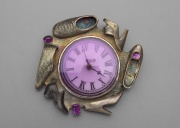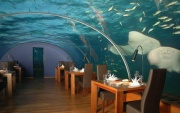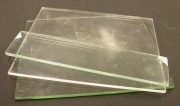Difference between revisions of "Acrylic sheet"
| Line 42: | Line 42: | ||
| − | [[Category:Materials database]][[Category:MWG]][[Category:Sheet/Film, Plastic]][[Category: | + | [[Category:Materials database]][[Category:MWG]][[Category:Sheet/Film, Plastic]][[Category:Glazing]][[Category:Board/Panel, Plastic]] |
Revision as of 09:34, 4 March 2023
Description
A transparent sheet or film made of acrylic resins. Originally introduced as 'organic glass' in 1931, the thermoplastic acrylic sheets are prepared by cast polymerization or extrusion. Some common brand names are Plexiglas®, Perspex, and Lucite®. Acrylic sheets are lightweight, tough, and colorless with excellent clarity and outdoor weather resistance. Compared to glass, acrylic is lighter and shatter-resistant, but more susceptible to scratching and transmission of UV. Acrylic has the unique ability to carry light around corners. Acrylic sheets are used for safety glass, aircraft canopies, windows, skylights, signs, instrument dials, tail light lenses, lighting fixtures, optical lenses, storage and display cases, bulletproof glass.
Synonyms and Related Terms
acrylic glass; acrylic glazing; lámina acrílica (Esp.); chapa acrílica (Port.)
Product names: Lucite® [Lucite]; Perspex® [Lucite); Plexiglas® [Arkema]; Altuglas® [Arkema]; Acrylite® [Piedmont Plastics]; Acrylplast
Applications
- Glazing
- Window film (with or without colors and/or UV absorbents)
Personal Risks
Combustible, but often self-extinguishing or slow burning.
Collection Risks
Links to Oddy Test results posted on AIC Wiki Materials Database Pages for individual materials below
- Astariglas GP cast acrylic sheet Tested in 2018
- OPTIX extruded acrylic sheet Tested in 2018
- 3m Window Film Tested in 2008
- 3m Window Film Tested in 2008
- 3m Window Film Tested in 2008
Physical and Chemical Properties
- Soluble in mineral spirits, turpentine, aromatic hydrocarbons, chlorinated hydrocarbons, esters, and ketones.
- Insoluble in water, ethanol.
- Several types of coatings can be added to increase scratch resistance and decrease UV light transmission.
- Density = 1.11-1.19
- Refractive Index = 1.49
Resources and Citations
- A Glossary of Paper Conservation Terms, Margaret Ellis (ed.), Conservation Center of the Institute of Fine Arts, New York City, 1998
- Wikipedia: http://en.wikipedia.org/wiki/Polymethyl_methacrylate (Accessed Oct. 18, 2005); developed 1928, marketed 1933


